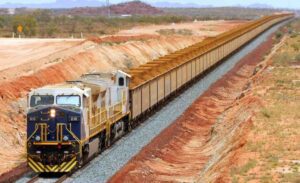A small Australian company says it can not only supplant the traditional method of making ammonia, it can also grab a significant part of the market targeted by the makers of green hydrogen electrolysers.
That is, if its simple-yet-horribly-complex technology works at scale.
PlasmaLeap says has almost finished building a large-scale commercial prototype of its plasma-to-ammonia system, a process that adds to ideas that emerged in the 2010s around decarbonising the ammonia-making process.
“The technology we build is a chemical reactor that takes environmentally available gasses like air and carbon dioxide,” says CEO Frere Bryne.
“It uses electricity to excite these gasses to a higher state of matter known as plasma, which makes them highly reactive. We then interact these plasmas with water.
“The benefit of our technology is its high compatibility with renewables, works under [normal] atmospheric conditions, uses air and water which are abundantly available, and is more energy efficient for direct synthesis of eFuels and chemicals than anything we have been able to find.”
The way it works is by bubbling air, which is a combination of about 70 per cent nitrogen and 30 per cent oxygen, through water. The more bubbles, the better, because these bubbles are then zapped with electricity, creating tiny lightning storm-like flashes inside.
Charging up the air molecules in this way “excites” the nitrogen electrons and turns the bubbles into plasma — an electrically charged gas of nitric oxide. The plasma is trapped as bubbles in the water solution.
But, now, the incredibly strong triple-electron bond holding the nitrogen atoms together is broken, meaning it’s available to bind with other elements and be put to work.
Usable nitrogen
As a water solution, it could be sprayed on a crop as instant fertiliser, or it could be or put through the second half of PlasmaLeap’s process: an electrochemical cell which uses a copper catalyst to push the reaction further along, stripping the nitrogen out of the plasma and binding it with the hydrogen in the water to make ammonia.
The system cuts out the requirement to make hydrogen and use it as an ingredient in the ammonia recipe, because it simply takes the hydrogen atoms from water directly.
Bryne says the first commercial application of the technology this year will be as on-site fertiliser makers for farms, with a range of companies in Tasmania and the east coast of Australia keen to trial DIY nitrogen sprays. If that goes well, commercial units will be designed in 2024.
They can also make hydrocarbon e-fuels from the electrochemical reactor, by swapping in carbon dioxide for hydrogen and using a different catalyst, and other materials but these products are for the distant future.
PlasmaLeap already sells plasma reactors into corporate research and academic centres.
Actually cutting ammonia emissions
The main game, however, will be in making ammonia as a medium to transport green hydrogen over long distances, without electrolysers and the current method available of making ammonia today, which is the 1908-designed Haber Bosch system.
Almost 2 per cent of the world’s electricity supply is spent every year turning nitrogen gas into oxides that can be used fertiliser, rocket fuel, explosives, dyes and an abundance of other products.
Currently, the Haber-Bosch system of producing ammonia emits about 300 million tonnes of carbon dioxide a year and uses between 3 and 5 per cent of the world’s annual fossil gas production.
Greening that system is difficult, as Haber-Bosch plants need to be big and require constant power.
Matching them with daytime wind and solar generation will reduce production from about 2000 tonnes NH3/day, the usual output of a big commercial plant, to less than 10 tonnes NH3/day, wrote University of Antwerp scholars Annemie Bogaerts and Erik C. Neyts in ACS Letters Journal.
“The theoretical limit of the energy consumption of plasma-based N2 fixation is more than 2.5 times lower than the energy consumption of the H–B process,” they wrote.
In 2018 they found the yield from the plasma method was around 25–30 g of NH3/kWh, which needed work when compared to 150–200 g of NH3/kWh for the Haber-Bosch method.
PlasmaLeap expects to get 20kWh/kg of ammonia from its method, once they’re finished by the end of 2023, but it’s been a complicated road to get there.
Byrne says considerable work had to go into finding a way to get as many bubbles into the water as possible and uncovering the right catalyst for the electrochemical reaction.
“About 10 years ago when people started talking about greening the Haber Bosch, two key routes emerged, the green hydrogen route and plasma,” Byrne says.
“[Plasma] is very complex physics, in some ways it’s very simple and in other ways it’s insanely complex.”










